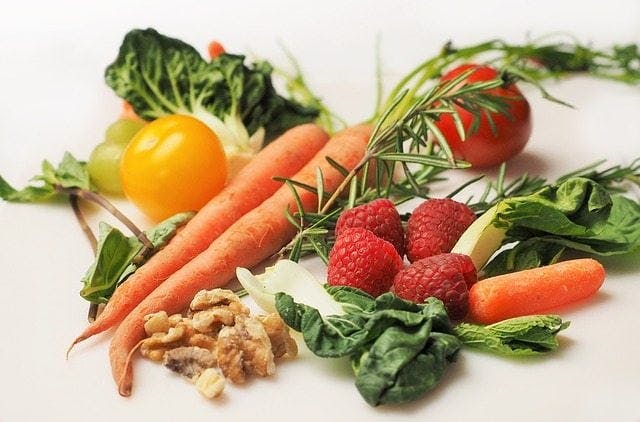
2024-07-12T16:54:51
Sunscreen Travel Tips
- Dermatology
August 17, 2016 | Wellness Institute

Healthy Alternatives For Recipes
Are you currently watching your intake of fat, salt or sugar? Have you recently had to eliminate certain foods from your diet? Or are you trying to incorporate healthier options into your diet? Whatever restrictions your current diet may have, whether due to allergies or health reasons, cooking can be a challenge.
Many of our favorite recipes wouldn’t necessarily qualify as “healthy,” or have ingredients that our bodies agree with, but that doesn’t mean you can’t ever cook them again. There are some great ingredient substitutions out there to help make your favorite dishes better for you—without sacrificing taste or texture.
Remember, these are just some examples. Experiment and find out what works best for you and your taste buds, or use your imagination and find other ways to create healthy recipes.
For baked goods, use half the butter or oil the recipe calls for, and replace the other half with unsweetened applesauce, mashed banana or prune puree. Remember that not all fats are created equal. Stay away from trans-fats and limit saturated fats. Heart healthy fats are called polyunsaturated and monounsaturated, and include virgin-olive oil, avocado oil, sunflower oil and walnut oil.
Processed sugar is the big enemy here and should be used sparingly (e.g. table sugar and high fructose corn syrup). Reduce the amount of sugar by one-third to one-half. Instead, add spices such as cinnamon, cloves, nutmeg, allspice, vanilla extract, coconut extract or almond extract to boost sweetness. Honey can also substitute sugar, and it has nutritional benefits whereas processed sugars do not. Be aware that honey also spikes blood sugar just like processed sugars.
For many main dishes and soups, you can reduce the salt by half or even eliminate it. You can reduce salt by half in baked goods that don’t require yeast too. For foods that require yeast, you may need to experiment (salt may be necessary for leavening when baking). Try using the better option of sea salt when using salt for cooking or baking; sea salt has more trace minerals such as magnesium, potassium and calcium when compared to table salt/iodine salt (processed). Though sodium levels are about the same, you may end up using a less amount of sea salt since the crystals are bigger than refined table salt crystals.
For example:
Pasta: Use whole-wheat pasta instead of enriched pasta. You’ll triple the fiber and reduce the number of calories. Fiber also helps you feel fuller, so you won’t need to eat another plate.
Milk: Prepare a dessert with fat-free milk instead of whole milk to save 66 calories and about eight grams of fat per cup. If you are lactose intolerant, many dairy-free alternatives have fewer calories than milk. They also have just as much, if not more, calcium and vitamin D than milk.
Meat: When making casseroles, scale back on meat, poultry or fish and increase the amount of vegetables. You’ll save on calories and fat while gaining more vitamins, minerals and fiber.
Toppings: Eliminate items you generally add out of habit or for appearance, such as frosting, sprinkles or whipped cream toppings–which are all high in fat, sugar and calories.
Condiments: Cut condiments or only choose 1 or 2: pickles, olives, butter, soy sauce, mayonnaise, syrup, jelly and mustard have large amounts of salt, sugar, fat and calories.
Cheese: – If a recipe calls for 1 cup of shredded cheddar cheese, use 1/2 cup instead.
Try these healthier preparation techniques:
Cooking Method: Braising, broiling, grilling, poaching, sautéing and steaming.
Basting Liquid: If the recipe says to baste the meat or vegetables in oil/drippings, use a small amount of fruit juice, vegetable juice, wine or fat-free vegetable broth instead.
Nonstick Cookware: Using nonstick pans or spraying pans with nonstick spray will further reduce the amount of fat and calories added to your meals.
No matter how much you reduce, substitute or eliminate ingredients, some recipes may still be high in fat, sugar or salt.
Slow down: Eat your meals slowly to give your brain time to register when you are getting full (about 20 minutes). You can also put your fork down between bites. Drinking a glass of water before eating can help you eat less as well.
Check portion sizes: Many portions served today are so large you may not know what a true serving is (many restaurants plates can serve 2 people). Train yourself at home by using smaller plates, spoons and cups. Learn to use common visual cues to understand servings. For example: a serving of meat (3 oz) is about the size of a deck of cards.
Plan ahead when eating out: It’s easy to overeat when dining out. Take precautions such as splitting a dish, skipping appetizers or asking for a take-out container to pack half your meal for the next day.
Before going ahead with a recipe, look it over and think about what you can substitute to make it healthier. Remember that not all substitutions are created equal, and while some may save you fat, it can possibly increase other areas such as sugar and sodium.
Product labels are designed to sell so it is important to understand how to read nutritional labels. Many products use colorful packaging and highlight words such as “natural,” “10 percent more,” “now with more fiber,” “made with less sugar” and “fat-free.” What they are not telling you in most cases is that other areas, like salt and sugar, were increased to bring back flavor that was lost (e.g. fat-free and low-fat products).
 About The Author: Cassidy Silversmith
About The Author: Cassidy Silversmith Cassidy Silversmith graduated from Utah Valley University in 2012 with a Bachelor of Science in Community Health Education. In 2013, she went on to become a Certified Health Education Specialist (CHES). She currently works in the Wellness Department as a Wellness Assistant.
Sources:
Mayo Clinic
Obesity Action Coalition
Kids With Food Allergies
Eat Right
Web MD
American Heart Association

WRITTEN BY:
The Live Better Team


2024-07-12T16:54:51

2024-07-02T11:42:04

2024-07-01T13:49:28

2024-06-21T14:29:51
This information is not intended to replace the advice of a medical professional. You should always consult your doctor before making decisions about your health.